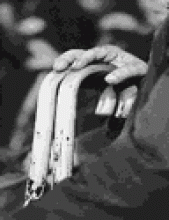To assist physicians and other users of the work of the Canadian Task Force on Preventive Health Care, our recommendations for clinical preventive actions are now organized into 6 letter grades or categories based on synthesis and evaluation of the best available evidence. We have recently made several refinements that we hope will be helpful to those who use our work. The changes reflect the ongoing evolution of methodology and reporting, both within our group and in the larger context of evidence-based medicine.1,2,3
In our original scheme,4 the “C” category reflected an evidence base that precluded a clear recommendation for action. The was because, taken together, the existing evidence was either conflicting or inconclusive, even though it was of adequate quantity and quality, or because the evidence was lacking in quantity or quality. Given the growing volume of evidence in general and the corresponding number of “C” grades, we felt there was value in distinguishing between these 2 situations.
Our new addition is the “I” grade. It lets clinicians, the public and policy-makers know that the existing body of evidence is of insufficient quantity or quality (or both) to support a specific recommendation for that clinical preventive action. Because there is, in effect, no supporting research evidence, a decision to provide the clinical preventive action thus must be based on something other than evidence.
Our new “C” grade is now reserved for cases where evidence of adequate quantity and quality may exist, but it is conflicting in that the effectiveness of the action remains unclear; i.e., different studies are of adequate quality but have different results, or the balance of benefits and harms in the body of available evidence is equivocal. Frustrating as this can be for clinicians and their patients, the “C” grade signals a situation where other factors, such as values and individual patient characteristics, may play an even larger role than when evidence is clear-cut. That is, because there is some evidence that could be considered in light of the patient's specific context, a more detailed discussion between the physician and patient may be required.
Finally, we have changed some of the language used to describe each grade. We now focus on whether the evidence supports a recommendation for or against a specific clinical preventive action rather than whether it should be included or excluded in the periodic health examination. This new approach speaks specifically to the clinical preventive action rather than anchoring the recommendations to a particular organizing framework for preventive care.
An overarching new emphasis, reflected in the footnote to Table 1, is the importance of communication between the patient and provider regarding evidence for the effectiveness of an action, including its potential risks and benefits, and the broader contextual and value-specific factors that are part of the decision-making context. Evidence is only one facet of a more complex and individualized process, but we continue to believe that knowing what works and what does not is an essential component of decision-making.
Table 1.
We hope that these revisions, along with our new clinically oriented brief “recommendation statements,”5,6,7,8,9,10 will provide greater clarity to clinicians and their patients and strengthen the base on which rational preventive care is provided.
𝛃 See related article page 213
Footnotes
-
Competing interests: None declared.











